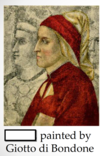CLASS: 9-17-18: Ars Nova- COMPLETE Flashcards
(35 cards)
Anything Before 1300 thinking. Shifts from Ars Antiqua to Ars Nova
Ars Antiqua
Ars Nova:
Composers start thinking of themselves as _____.
Ars Nova:
Composers start thinking of themselves as artists.
Sacred music, they are mostly just decorating music. Not thinking about it as their own. They write about the act of composing. Notation.
What is the defining characteristic of a medieval motet?
Different texts under each voice
Can be the same or different languages.
How do you tell a goliard song from a chanson?
Goliard Song is in Latin
Chanson is in French
Cantiga is in Spanish
What are the key themes of French chanson?
- Courtley love
- Impossible love
- Dawn Song
- Laments
- Pastoral (Knight trying to get with Shepherdess and she outwits him)
- Politics
- Vidas (Autobiographies)
What is the form of a medieval Rondeau?
FORM:
ABaabAB
FORM LETTERS:
Little letter- Same music Different ___
FORM LETTERS:
Little letter- Same music Different Text


Dante: 14th-century story that ties it to the Ars Nova
The flowering of _____ CULTURE
____ of SECULAR and SACRED pieces, mash-up
Dante: 14th-century story that ties it to the Ars Nova
The flowering of SECULAR CULTURE
Blend of SECULAR and SACRED pieces, mash-up
Dante is in _____. It’s the vernacular, the language of the people. Not a court language.
Italian
Dante shifts the focus away from God and onto ___
Dante shifts the focus away from God and onto men
*Main character, Dante, is about him navigating his own relationship with God, having his own AGENCY. The story is about the acts an experience VS what GOD does for people.
How does Dante impact music of the time:
The composer is seen as an individual and ____.
How does Dante impact music of the time:
The composer is seen as an individual and craftsman.
The sacred composers are only decorating the mass to future decorate the sacred services. Not concerned with taking credit. They don’t care.
We wouldn’t know about Leonin and Perotin without the writings of Anonymous IV. They aren’t putting their names on the compositions.
Composers want to take more credit for their work. Composers started developing individual styles.
Peaks in the romantic era.
How does Dante impact music of the time:
The _____ of secular and sacred texts. Saw it in the early motet.
How does Dante impact music of the time:
The blending of secular and sacred texts. Saw it in the early motet.
How does Dante impact music of the time:
Writing about the art of ______.
How does Dante impact music of the time:
Writing about the art of composition.
Composers write how they want you to perform it. They don’t want you to make up your own ideas. Theorizing practice.
How does Dante impact music of the time:
Innovative compositional ___ and ____:
How does Dante impact music of the time:
Innovative compositional advances and tactics:
Rhythm and form
Composers are writing about it.
Earliest notation
______ (c. 1280)
Duration indicated by shape of note
Earliest notation
Franco of Cologne’s Notation (c. 1280)
Duration indicated by shape of note








We have a pulse but no ____.
Whether a long subdivides … it depends on the context of the music. No standardization. Fitting it into our meter requires lots of triplets. Putting into modern notation, we see it in a meter but that’s not how the performers saw it. There is no downbeat. There’s a PULSE but no METER. Just note shapes.
We have a pulse but no meter.
Whether a long subdivides … it depends on the context of the music. No standardization. Fitting it into our meter requires lots of triplets. Putting into modern notation, we see it in a meter but that’s not how the performers saw it. There is no downbeat. There’s a PULSE but no METER. Just note shapes.
If a note can be divided into 3 it’s ____
If a note cannot be divided into 3 it’s ____
If a note can be divided into 3 it’s perfect
If a note cannot be divided into 3 it’s imperfect
TALK ABOUT NAWM p 108

There’s a pulse, but there is no meter, especially in the top voices
Had up to 9 subdivision in notation
Petrus de Cruce’s Notation (c. 1280-1300)
Complexity increases substantially













